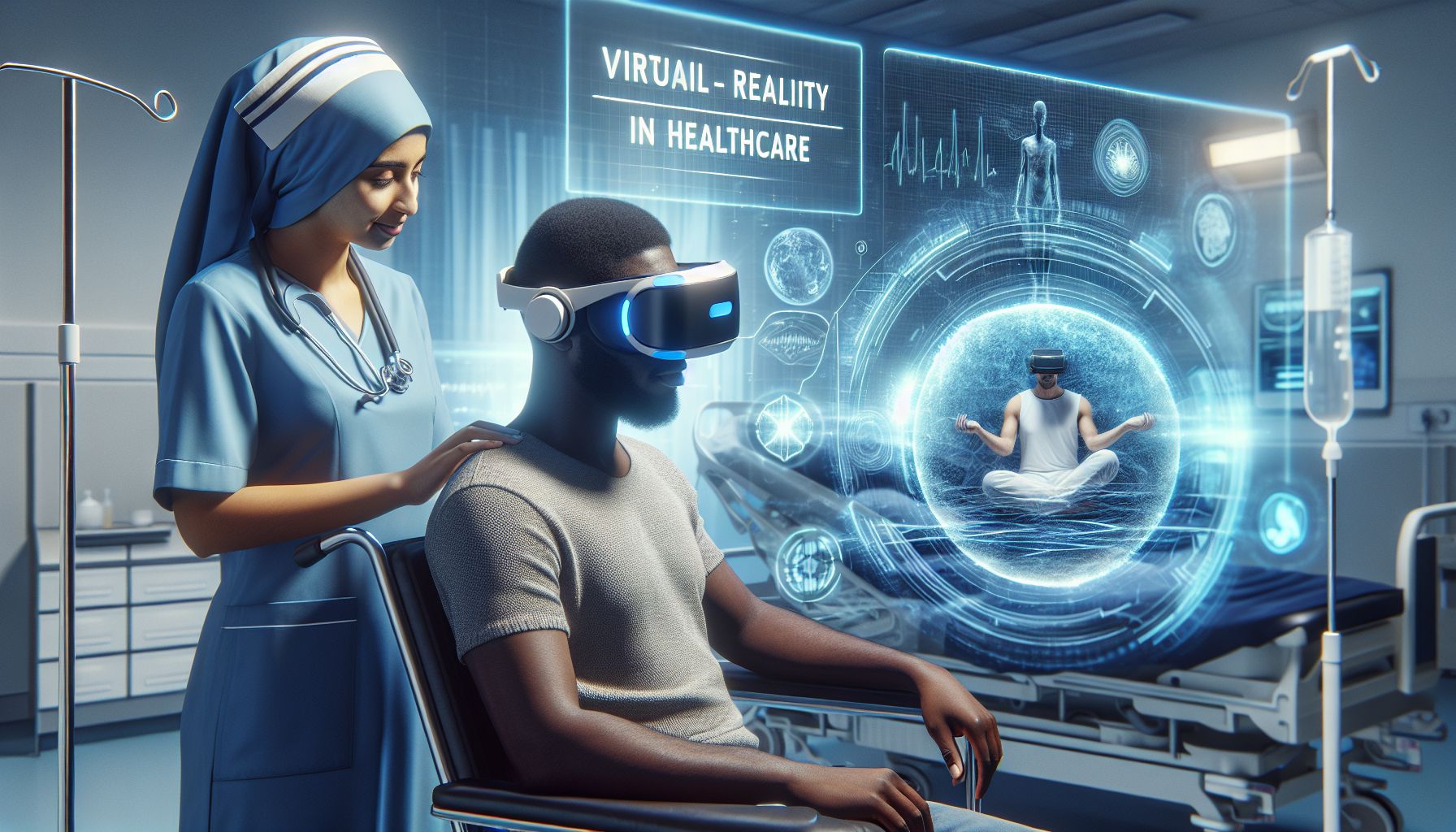📌 Let’s explore the topic in depth and see what insights we can uncover.
⚡ “Imagine undergoing surgery without a single scalpel in sight, or conquering your deepest phobias in the safety of a simulated world. Welcome to the future of healthcare, where virtual reality is changing the game.”
In the realm of sci-fi movies, virtual reality (VR) is often depicted as a technology that can transport us to different worlds, provide superhuman powers, or even alter our very existence. But in the actual world, the application of VR has taken a slightly different, yet no less impressive, route. 🔍 Interestingly, particularly true in the field of healthcare, where VR is helping to revolutionize the way we approach medical treatments and therapies. The use of virtual reality in healthcare isn’t just a futuristic concept—it’s happening right now. From pain management to mental health therapy, VR is being used to create immersive, transformative experiences that are changing the face of modern medicine. Let’s dive into this fascinating new world and explore how VR is shaping the future of healthcare.
🚀 The Advent of Virtual Reality in Healthcare

"Immersing into Health: The VR Therapy Revolution"
When we think about VR, we often picture high-tech gaming systems or immersive movie experiences. However, the use of this technology extends far beyond entertainment. In healthcare, VR is being used to create simulations that can help doctors diagnose illnesses, plan surgeries, and even provide innovative forms of therapy. Virtual Reality in healthcare is a rapidly growing field, with a market predicted to reach $5.1 billion by 2025. This growth is driven by the increasing adoption of VR in surgical simulations, patient treatment, and medical training. This isn’t just good news for the tech industry—it’s a game-changer for patients and healthcare providers alike. VR can offer a more interactive and engaging method of treatment, providing a fresh approach to traditional therapy methods.
💊 VR and Physical Therapy
One of the most promising applications of VR in healthcare is in the field of physical therapy. Traditional physical therapy can often be grueling, repetitive, and—let’s face it—a bit boring. But what if you could transport your therapy session to a different world entirely? That’s the premise behind VR physical therapy. Instead of performing exercises in a sterile clinic, patients put on a VR headset and find themselves in a virtual world where therapy turns into a game. For example, a patient recovering from a stroke might play a VR game that involves catching virtual objects, helping to improve their motor skills and hand-eye coordination. This type of therapy is not only more engaging for the patient, but it can also provide more precise data for therapists, who can track patients’ movements in the virtual world and adjust the therapy program accordingly.
🧠 VR and Mental Health Therapy
Beyond the realm of physical therapy, VR is also making waves in the field of mental health. Traditional therapy sessions often involve talking through problems and working on cognitive behavioral strategies. While this can be effective, VR offers an exciting new tool for therapists to explore. In the world of VR therapy, patients can confront their fears and anxieties in a safe, controlled environment. For instance, someone with a fear of heights might find themselves standing on top of a virtual skyscraper, guided by a therapist who can help them work through their anxiety. Moreover, VR can also provide a unique therapeutic platform for treating post-traumatic stress disorder (PTSD). By recreating traumatic events in a controlled virtual environment, therapists can help patients confront and process their experiences in a safe and supportive way.
👨⚕️ VR and Medical Training
The use of VR isn’t limited to patient therapy—it’s also proving invaluable in medical training. VR can provide a safe and controlled environment for medical students to practice surgeries and procedures without the risk of harming a real patient. Imagine a medical student able to practice a complex surgical procedure in a stress-free, virtual environment before ever setting foot in an operating room. They can make mistakes, learn from them, and refine their techniques—all without the high stakes of a real-life surgery. Furthermore, VR can simulate a wide range of scenarios that a medical student might encounter in their career, from a routine surgery to a rare and complex case. This can help prepare students for the unpredictable nature of the medical field and improve their readiness and confidence.
🧭 Conclusion
The use of virtual reality in healthcare is no longer the stuff of science fiction—it’s a present reality with exciting implications for the future. By turning therapy into an immersive, engaging experience, VR has the potential to revolutionize how we approach physical and mental health treatment. Moreover, the use of VR in medical training can help prepare the next generation of healthcare providers, ensuring they are ready to face the challenges and complexities of modern medicine. As we continue to explore the potential of VR in healthcare, we are likely to see further advancements and innovative applications. Virtual reality might not be able to teleport us to different worlds, but it’s certainly transforming the world of healthcare—and that’s a future worth being excited about. So, whether you’re a healthcare provider, a patient, or someone fascinated by the intersection of technology and medicine, keep an eye on this space. The virtual future is here, and it’s creating real change in the world of healthcare.
🚀 Curious about the future? Stick around for more discoveries ahead!
